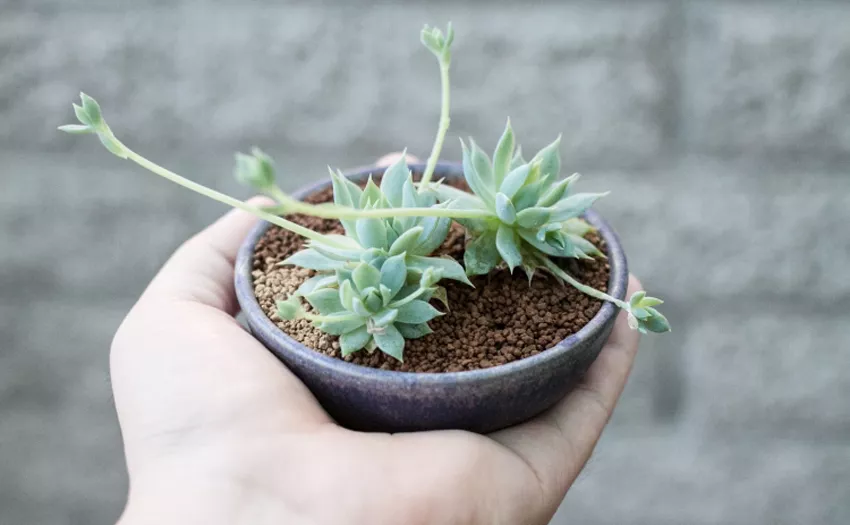Succulent plants, with their diverse shapes and vibrant colors, have become a popular choice for both indoor and outdoor gardens. Beyond their aesthetic appeal, these unique plants serve various functions and adaptations that contribute to their resilience and survival in arid environments.
Water Storage and Succulence
The defining feature of succulent plants is their ability to store water in specialized tissues, allowing them to thrive in arid and semi-arid regions where water availability is limited. The term “succulence” refers to the plant’s capacity to store water in its leaves, stems, or roots. This adaptation is a crucial survival mechanism, enabling succulents to endure long periods of drought. The water stored in these tissues serves as a reservoir that sustains the plant during dry spells, allowing it to continue photosynthesis and other essential metabolic processes.
Adaptations for Arid Environments
Succulent plants have evolved a range of adaptations to cope with the challenges posed by arid environments. One notable adaptation is the modification of their leaves, which often take on thick, fleshy forms. These specialized leaves have reduced surface area and are covered in a waxy coating, minimizing water loss through transpiration. Additionally, some succulents, such as cacti, feature modified leaves in the form of spines, which further reduce water loss and serve as a defense mechanism against herbivores.
Photosynthesis in Succulent Plants
While succulents have adapted to conserve water, they still need to engage in photosynthesis to produce energy. The unique anatomy of succulent plants allows them to carry out photosynthesis with minimal water loss. Unlike typical plants with broad leaves, succulents often have modified chloroplasts located within their parenchyma tissues. This adaptation allows them to capture sunlight efficiently while minimizing the exposure of chloroplasts to the outside environment, reducing the risk of dehydration.
Habitat and Biodiversity Support
Succulent plants play a crucial role in supporting biodiversity in their native habitats. Many arid regions around the world are home to a diverse array of succulent species, each uniquely adapted to its specific environment. These plants create microhabitats that shelter a variety of organisms, from insects and spiders seeking refuge in their structures to birds and mammals relying on succulents as a source of food. The presence of succulent vegetation contributes to the overall richness and complexity of arid ecosystems.
Erosion Control and Soil Stabilization
The extensive root systems of many succulent plants serve not only as water-absorbing structures but also as anchors that help control erosion and stabilize soil. In arid and semi-arid regions where wind and water erosion are prevalent, succulents with their deep, fibrous roots play a crucial role in preventing soil degradation. By binding the soil particles together, succulents help maintain the integrity of the landscape and create conditions for other plant species to establish themselves.
Medicinal and Therapeutic Uses
Beyond their ecological roles, succulent plants have been utilized by various cultures for their medicinal and therapeutic properties. Aloe vera, a well-known succulent, has a long history of being used to treat burns, wounds, and skin irritations. The gel within its fleshy leaves contains compounds with anti-inflammatory and healing properties. Similarly, other succulents like Haworthia and Crassula have been traditionally used in certain herbal remedies. While it’s important to approach such uses with caution and seek professional guidance, the potential medicinal benefits of succulents add another layer to their significance.
Cultivation and Ornamental Use
In contemporary times, succulent plants have gained immense popularity as ornamental additions to gardens, homes, and offices. Their visually striking appearances, combined with their low maintenance requirements, make them a favorite among plant enthusiasts. The diversity of succulent species allows for creative landscaping and container gardening, transforming spaces into aesthetically pleasing environments. The widespread cultivation of succulents for ornamental purposes also contributes to the conservation of various species, as they become more accessible to a global audience.
Carbon Sequestration and Climate Resilience
Succulent plants, like many other types of vegetation, contribute to carbon sequestration, playing a role in mitigating climate change. Through the process of photosynthesis, succulents absorb carbon dioxide from the atmosphere and convert it into organic compounds, storing carbon in their tissues. In arid regions where succulents thrive, their ability to sequester carbon becomes particularly relevant as climate change intensifies. Understanding the role of succulents in carbon cycling contributes to broader efforts aimed at enhancing climate resilience.
Conservation Challenges and Threats
Despite their resilience, many succulent species face conservation challenges, primarily due to habitat loss, climate change, and illegal collection for the horticultural trade. Some succulents, especially those with limited ranges or specific habitat requirements, are at risk of extinction. Conservation efforts are crucial to preserving the diversity of succulent plants and the ecosystems they inhabit. Establishing protected areas, implementing sustainable cultivation practices, and raising awareness about the importance of conservation are vital steps in safeguarding these remarkable plants.
Educational and Research Significance
Succulent plants serve as valuable subjects for scientific research and education. Their unique adaptations to arid environments offer insights into plant physiology, ecology, and evolution. Studying succulents can enhance our understanding of how plants cope with environmental stressors and contribute to the development of strategies for cultivating crops in water-scarce regions. Additionally, their captivating forms and adaptations make succulents excellent educational tools, fostering interest and appreciation for the natural world.
Conclusion
In conclusion, succulent plants, with their water-storing capabilities and remarkable adaptations, play multifaceted roles in ecosystems and human environments alike. From their contributions to biodiversity and habitat support to their medicinal uses and ornamental appeal, succulents have captured the fascination of enthusiasts, scientists, and conservationists. As we continue to explore and appreciate the diverse array of succulent species, it becomes increasingly important to balance our admiration with efforts to conserve and sustain these remarkable plants in their natural habitats.


